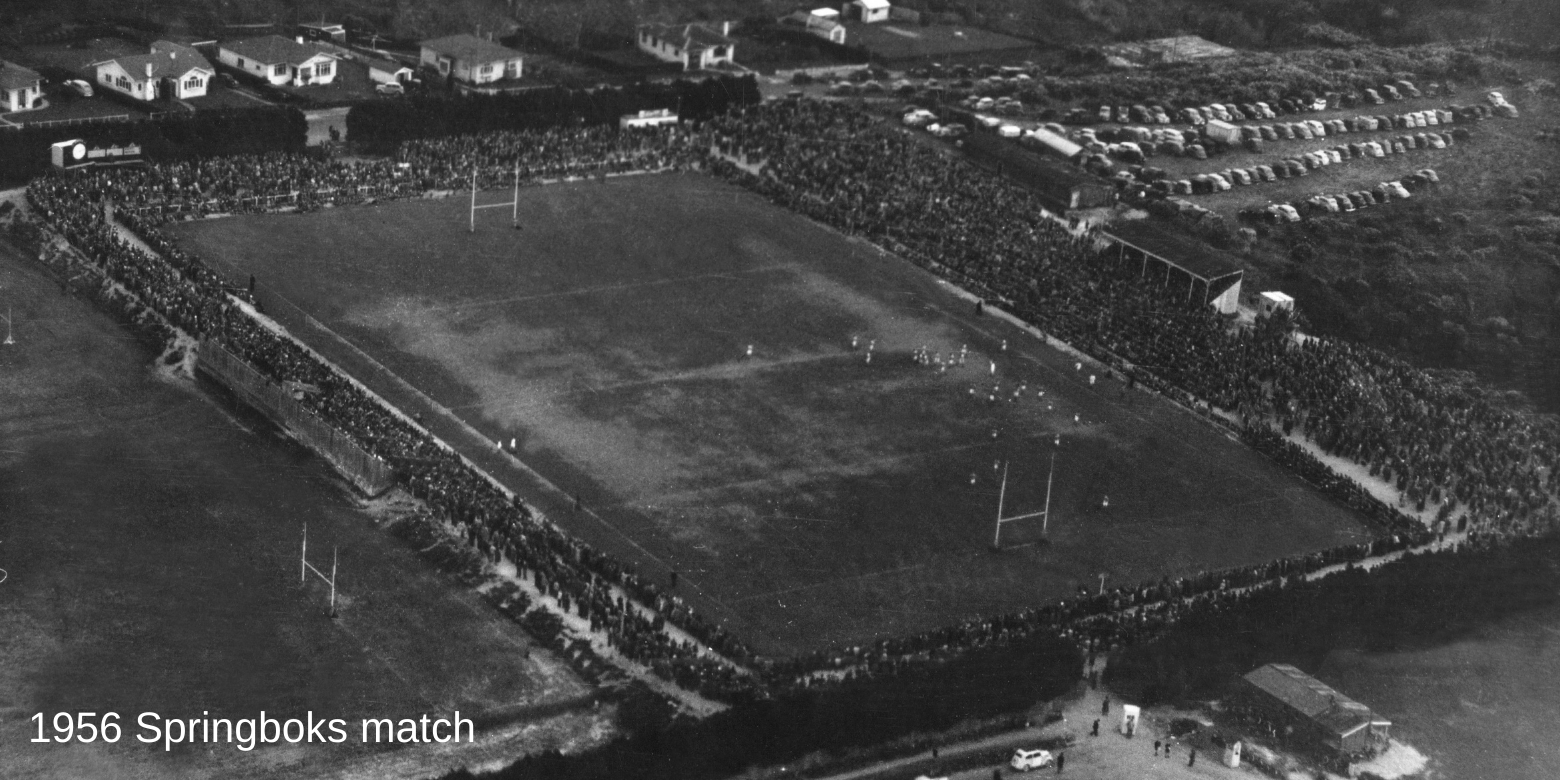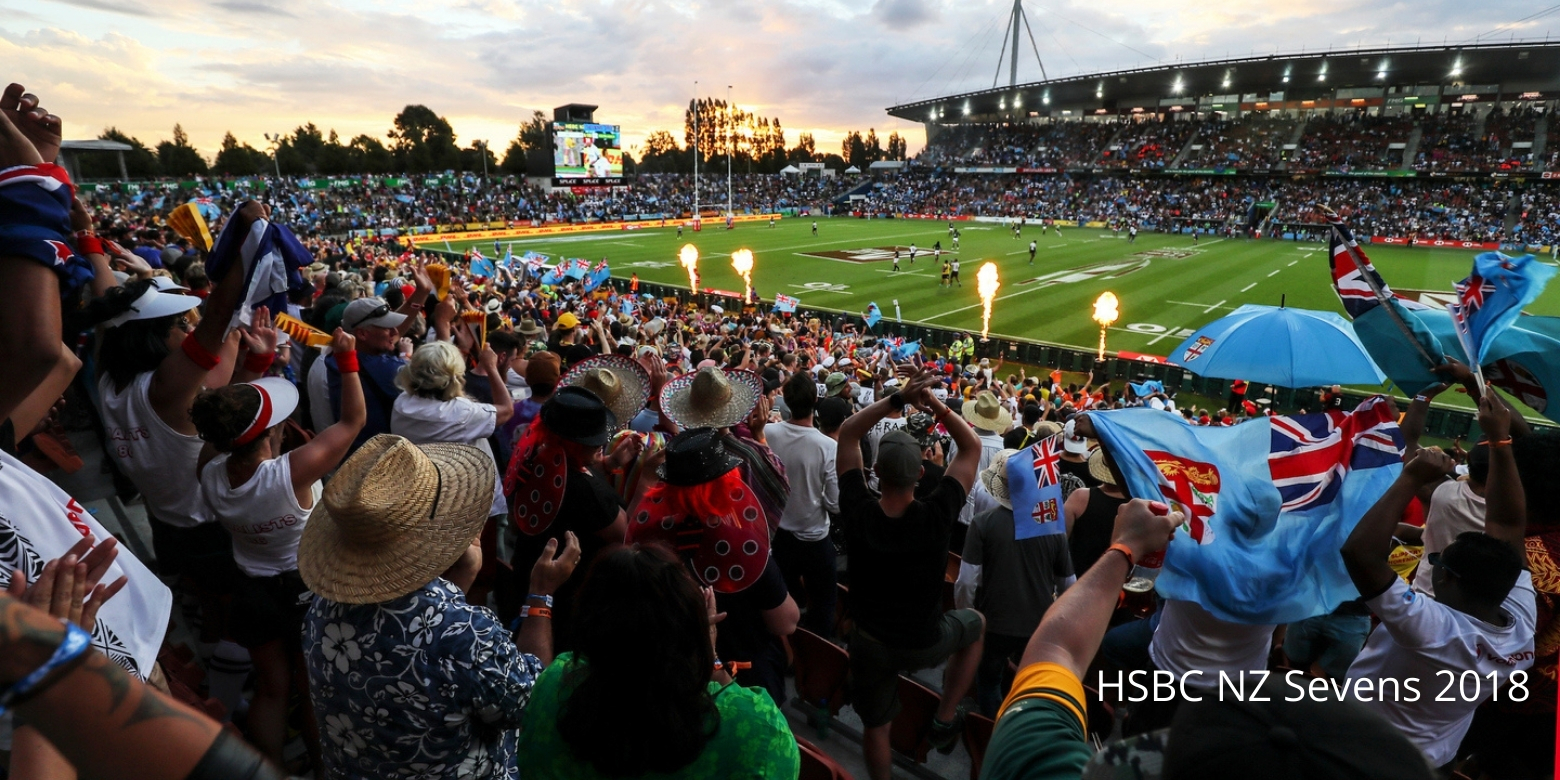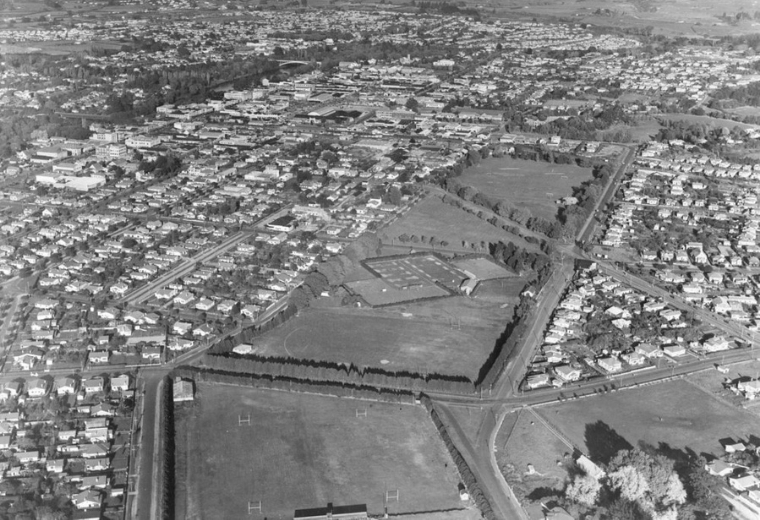
1864 | A vision for Kirikiriroa
The West Town Belt, a 54ha network of park and recreation space, which includes FMG Stadium Waikato was originally surveyed in the 1860s, creating a green buffer between the Hamilton borough and what, at the time, was the neighbouring Waipa county. It is an example of 19th century urban design.
Hamilton Old Boys Rugby and Sports Club, next to the stadium, has the longest organised sports connection to the wider stadium area. The club established a base on the West Town Belt in 1916, while its close rivals Fraser Tech Rugby Football Club – just across the road – has had a site near the stadium since 1923.
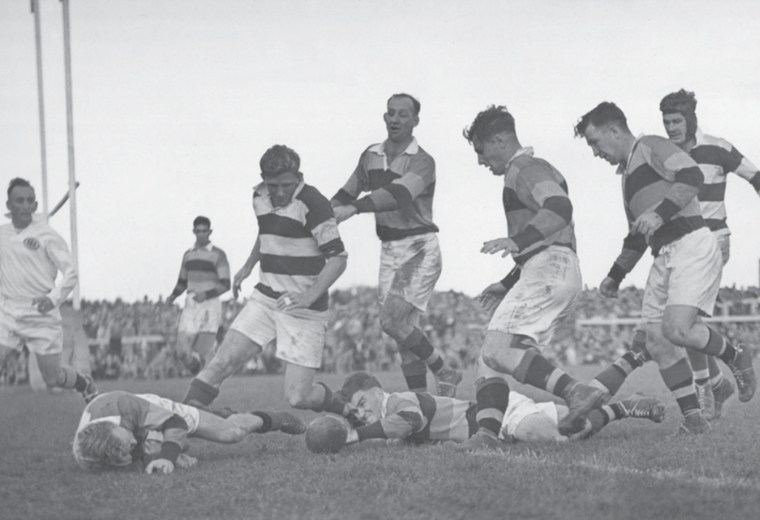
1925 | Early History
Waikato Rugby Union (then Hamilton Rugby Union) took a lease on the site in 1921, and over the next few years its members cleared weeds to prepare the area for what would become rugby fields.
In 1929, weary players could finish their games knowing a hot shower awaited in the changing room! Five years later, the roof of the basic original grandstand collapsed – thankfully no-one was injured – and in 1958 the construction of a new grandstand began. That structure remains today, and is now the Porter Group Stand.
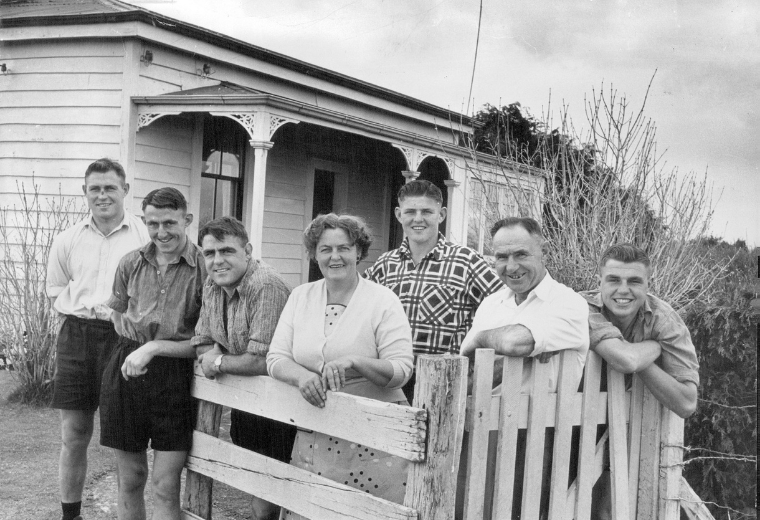
1956 | The Clarke Family
The Clarke family is an integral piece of the history of FMG Stadium Waikato.
Alex and Ann Clarke helped lay the groundwork for the feats of their five sons - Ian, Don, Doug, Brian and Graeme.
While father Alex instilled his skills and passion for rugby in his boys from a young age, Ann ensured they were all well fuelled with home baking, fresh lamb and plenty of vegetables, and – like many proud mums – was never too far away from the side line.
The Clarkes’ talented sons went on to amass a total of 409 matches for Waikato, and all five brothers famously played together for Waikato against Thames Valley in 1961.
Today, a corporate lounge in the stadium’s Brian Perry Stand is named ‘Clarke Lounge’ in honour of the family.
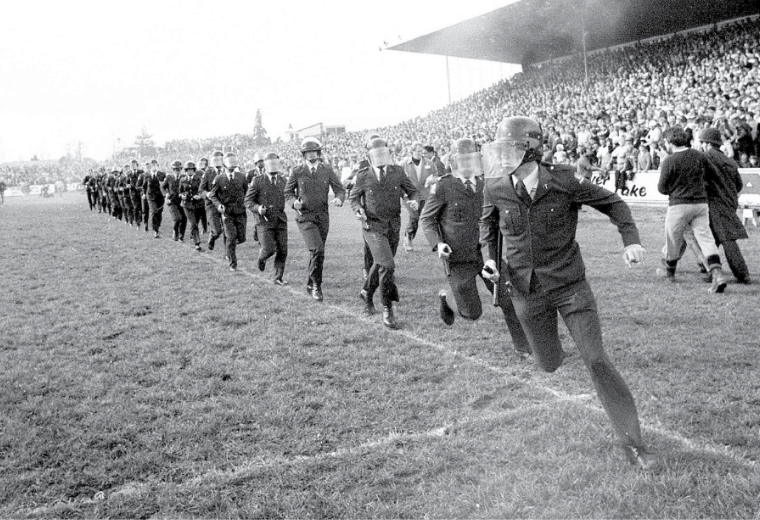
1981 | The game that never was
Waikato rugby first clashed with the Springboks in 1921 but the 1981 Springbok tour was mired in controversy and tension. The visitors reached Hamilton for what would’ve been the second match on their nationwide tour. New Zealanders opposed the tour because of South Africa’s apartheid regime of racial segregation and joined anti-tour marches and protests around the country.
Anticipating a protest, more than 500 police officers were in the city. Security for the match was managed by Peter Bos – an ex-military man and Waikato rugby stalwart who would go on to become the stadium’s patron.
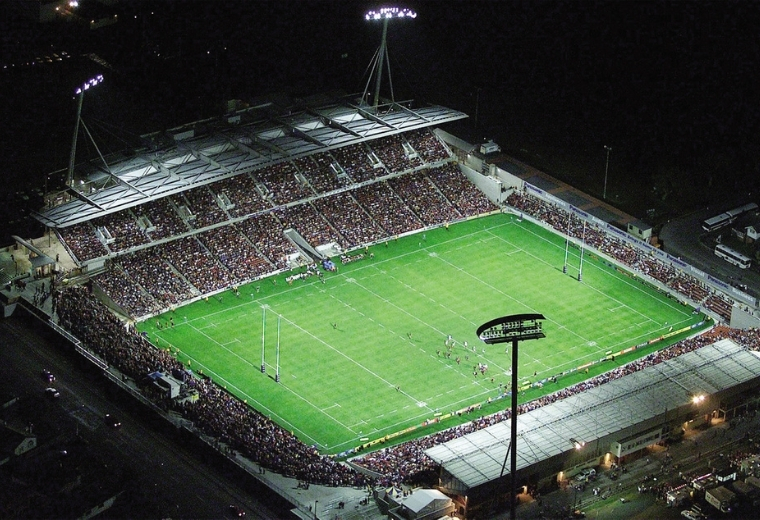
FMG Stadium Waikato today
FMG Stadium Waikato, the spiritual home of rugby in Hamilton, is an impressive 25,000-capacity international sports stadium.
Completed in 2002, FMG Stadium Waikato continues to build on the proud history of the grounds it stands on by hosting a range of top-quality sports fixtures each year – predominately rugby, along with the likes of rugby league, rugby sevens and football.
Cultural Heritage
Maaori culture is at the heart of our venue. The 15m-tall carved Whatanoa Gateway commemorates the ancient traditions and landmarks of Waikato Tainui. It is named Whatanoa in honour of an ancient paa and burial ground that once existed nearby, on the corner of Willoughby Street overlooking Waitawhiriwhiri Gully.
Our Home Turf
The stadium is known for having one of the best turf playing surfaces in the sporting world – it’s part of the venue’s strong reputation. The pitch is made up of three levels of material: gravel as a base layer, a subsurface of turf-specific washed sand, and then the grass itself.
More than Rugby
FMG Stadium Waikato has hosted many international sports matches and has been host to many other events over the years including Football, Nitro Circus, Rugby league and American Football.
Visit our history wall
Get the full view of our stadium's fascinating 100 year-rich history by visiting our interactive 84-metre display wall. Located outside the venue's grounds on Tristram Street near gate 4 and always open.
Information about the construction of the History Wall can be found here.

